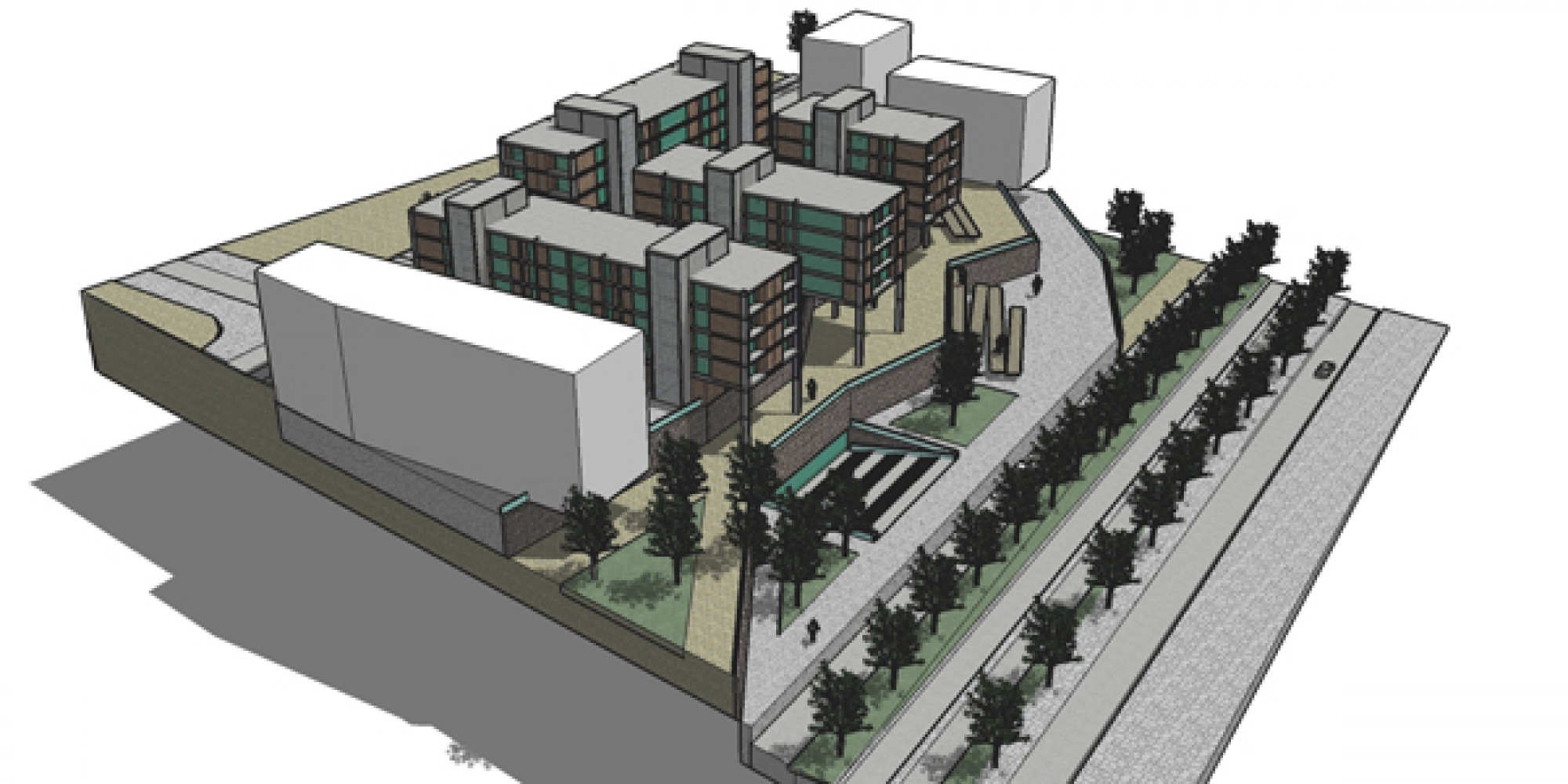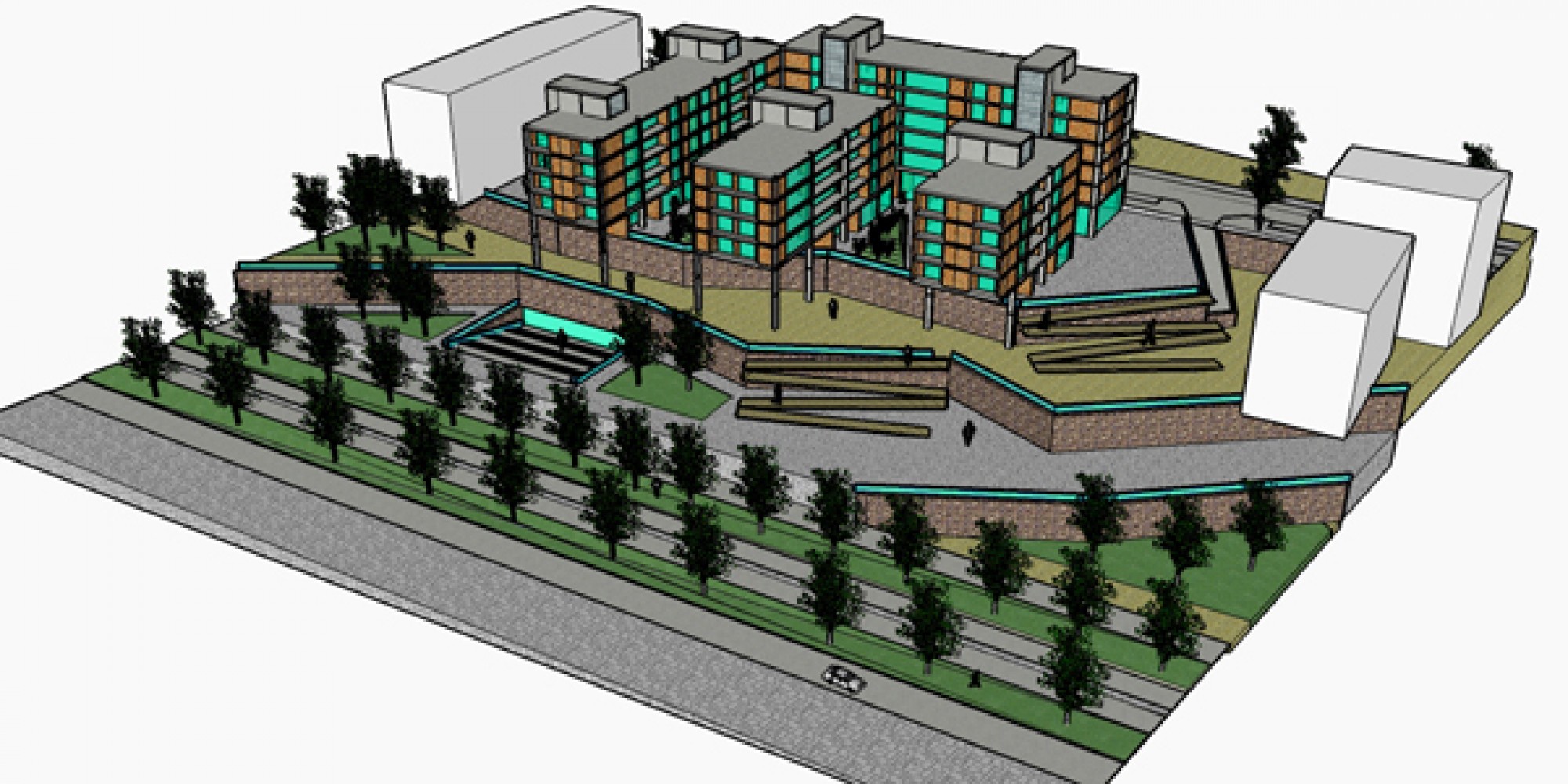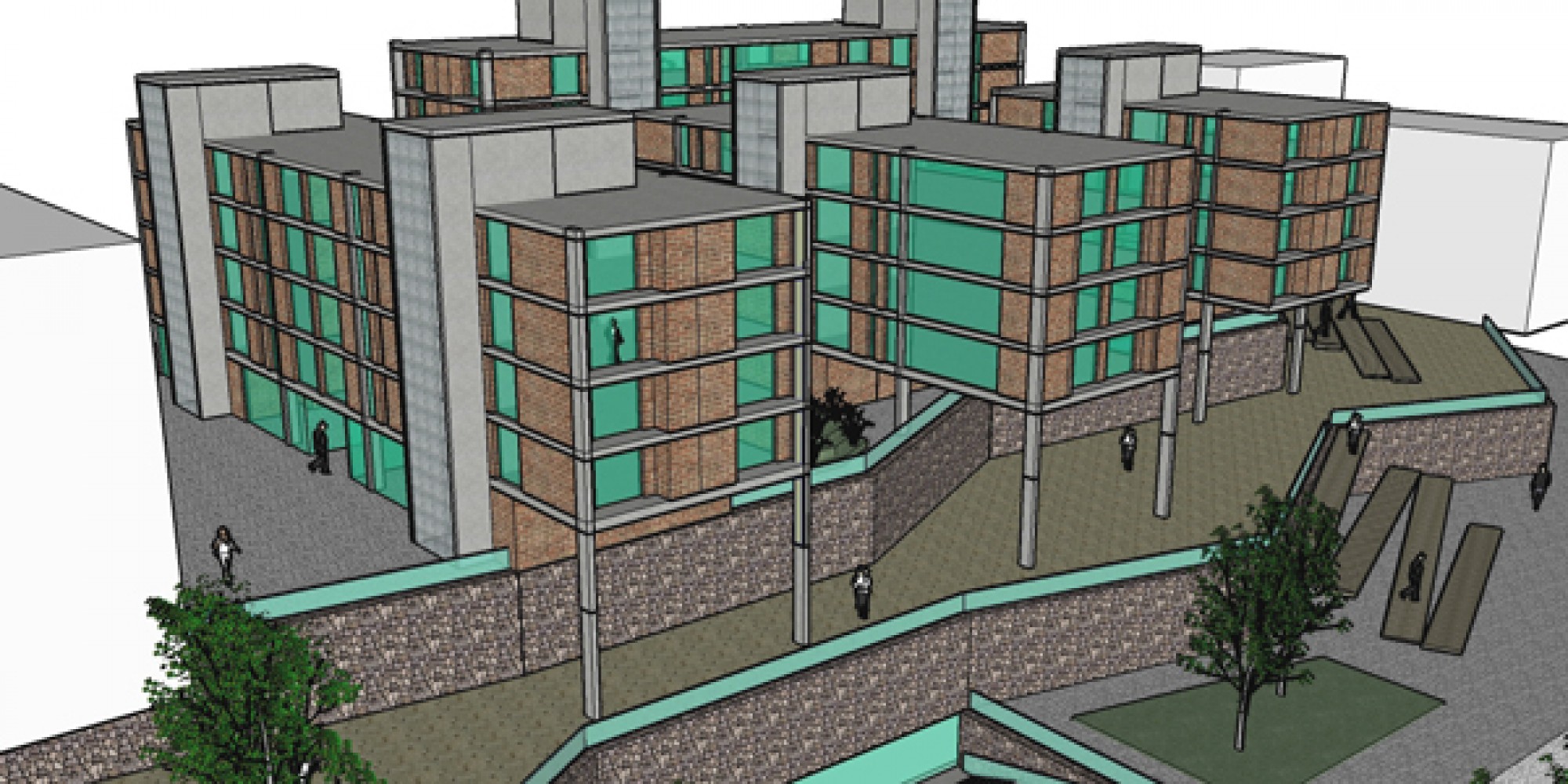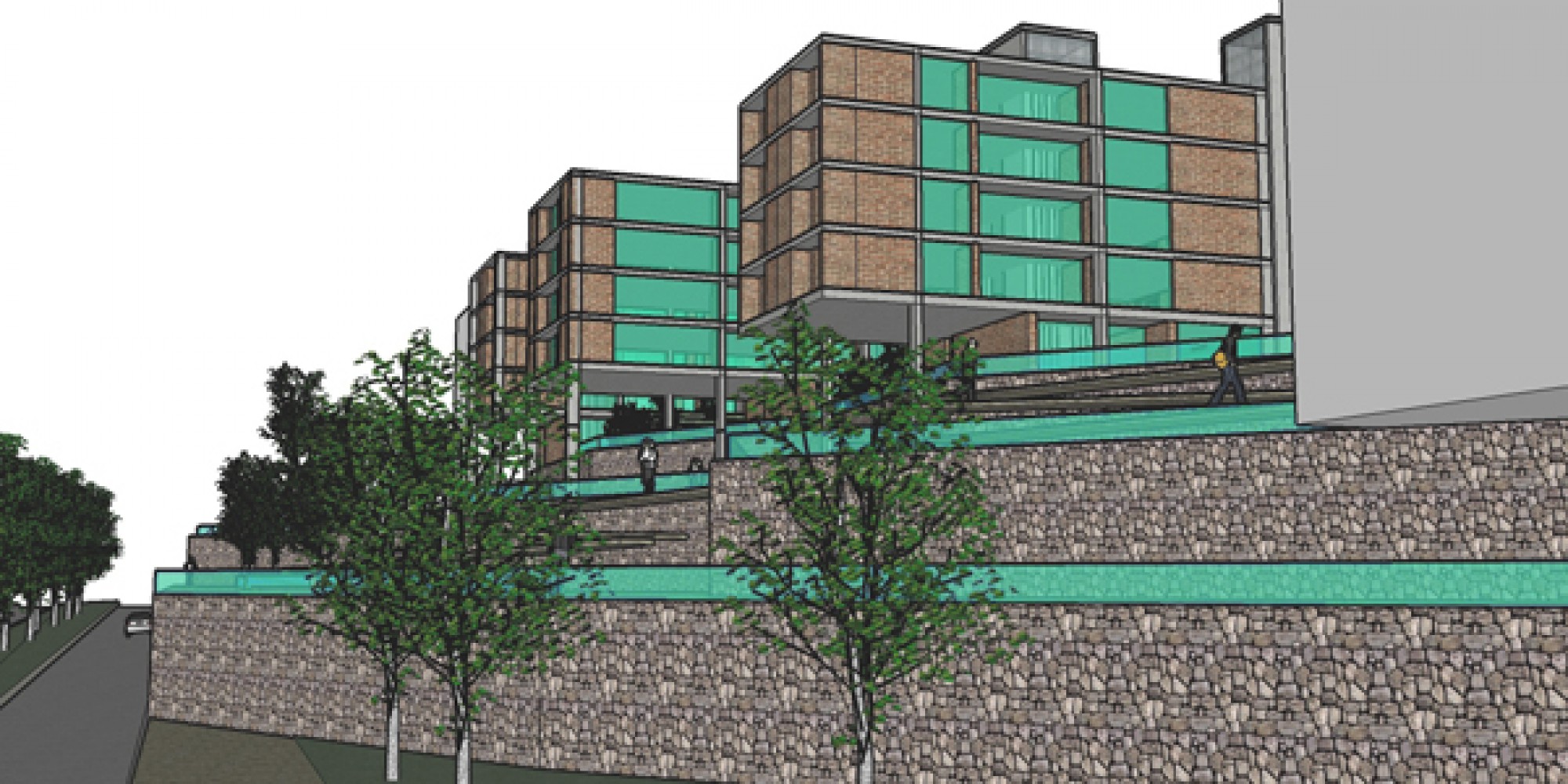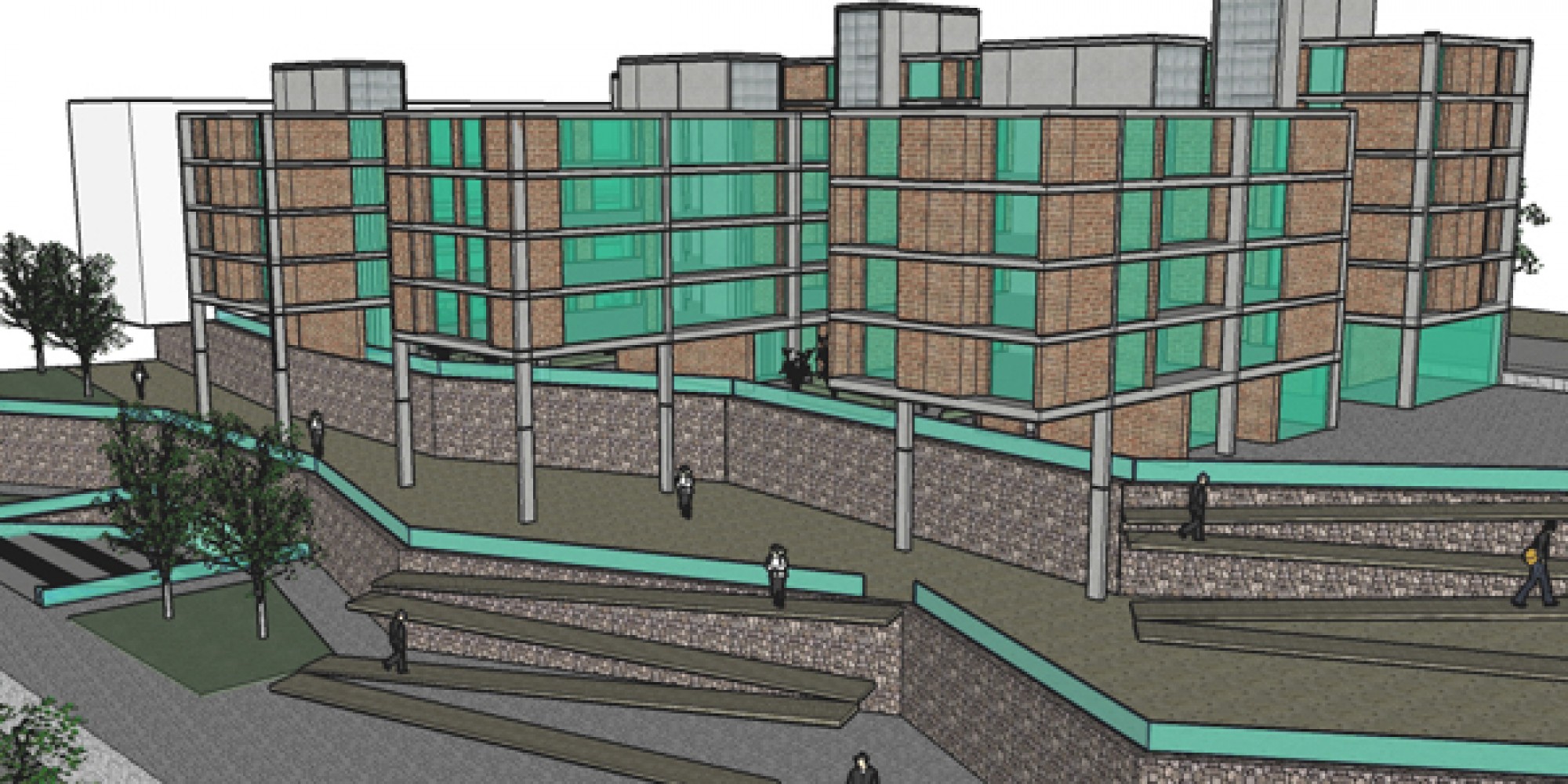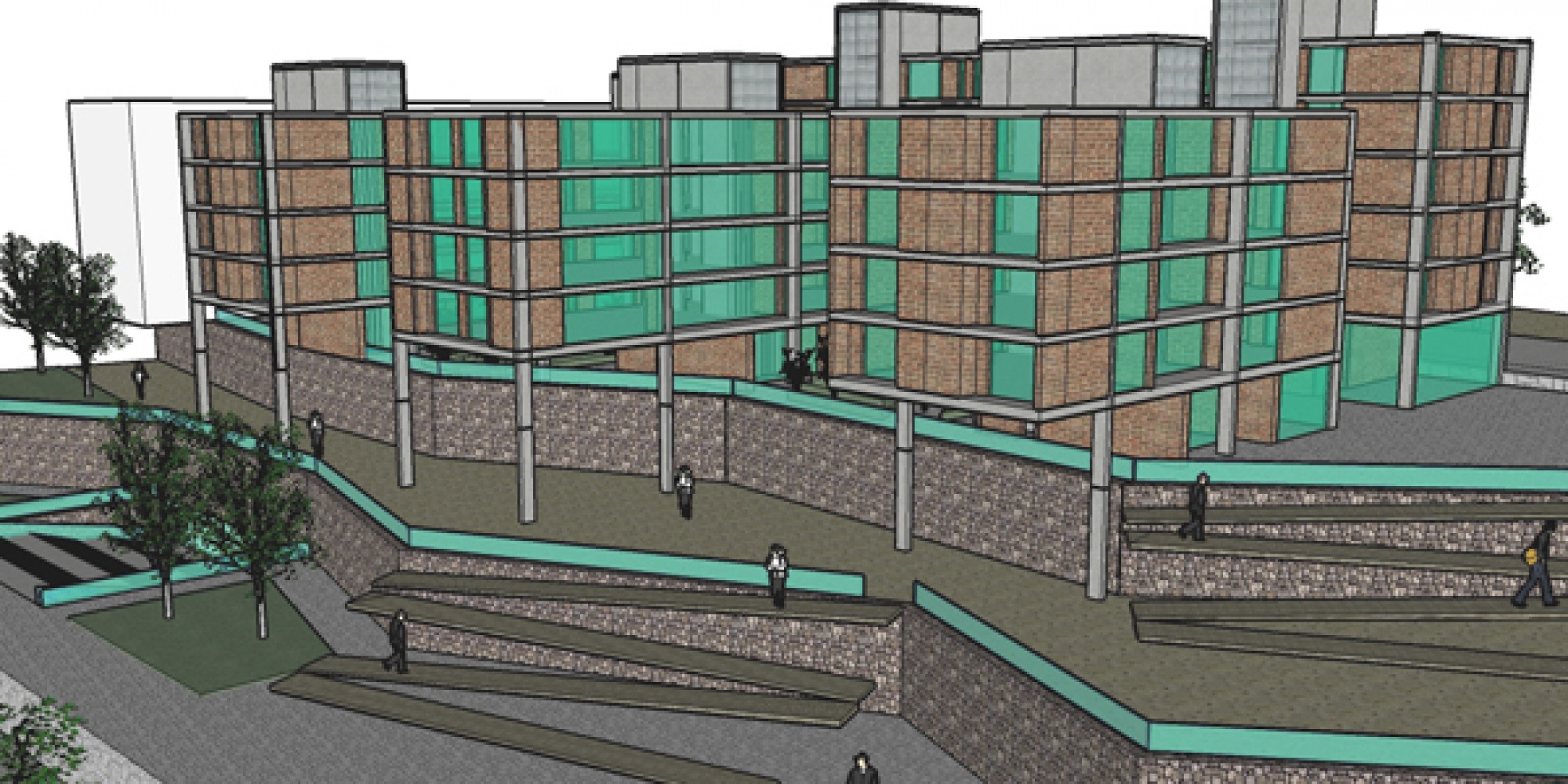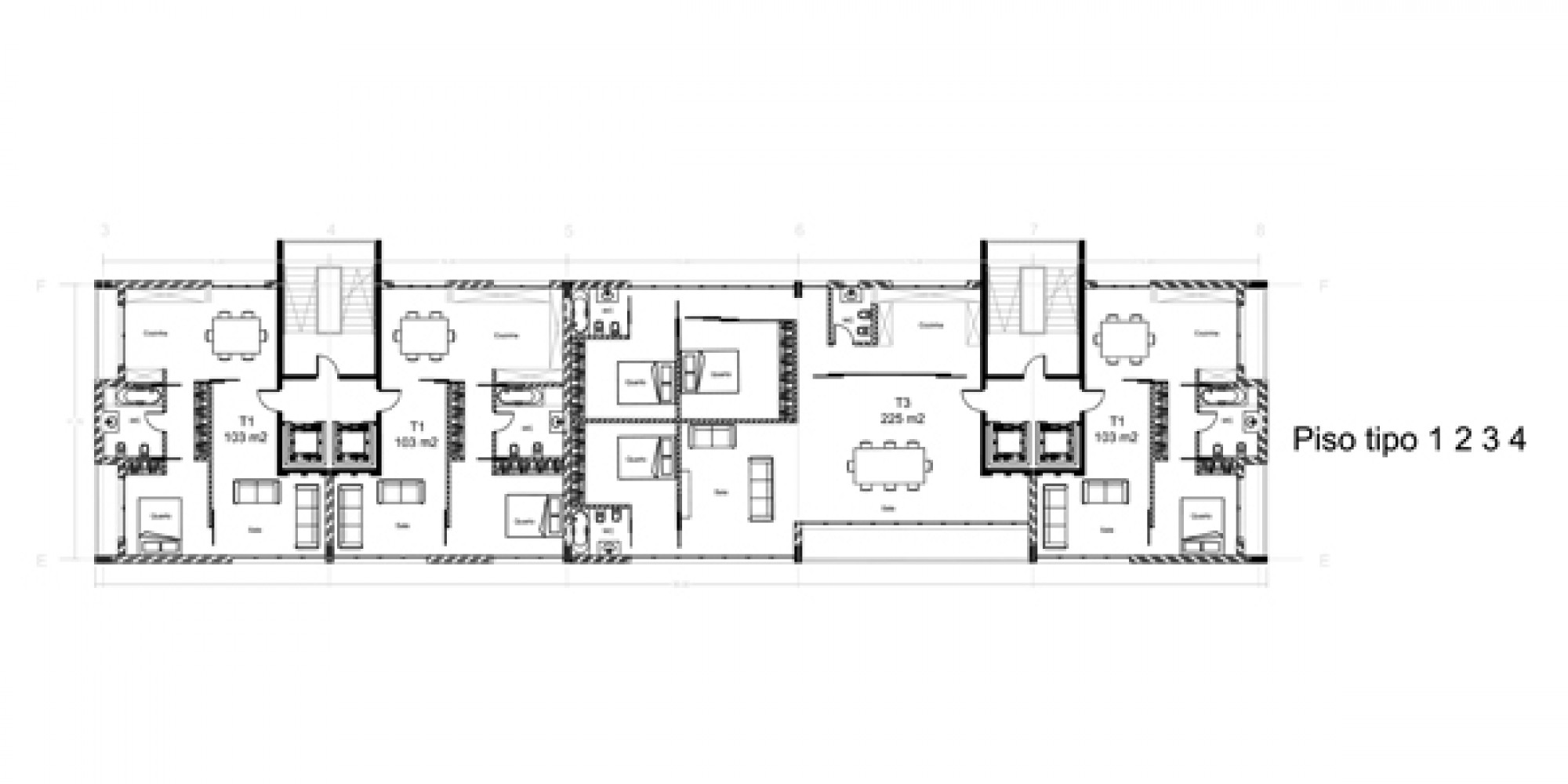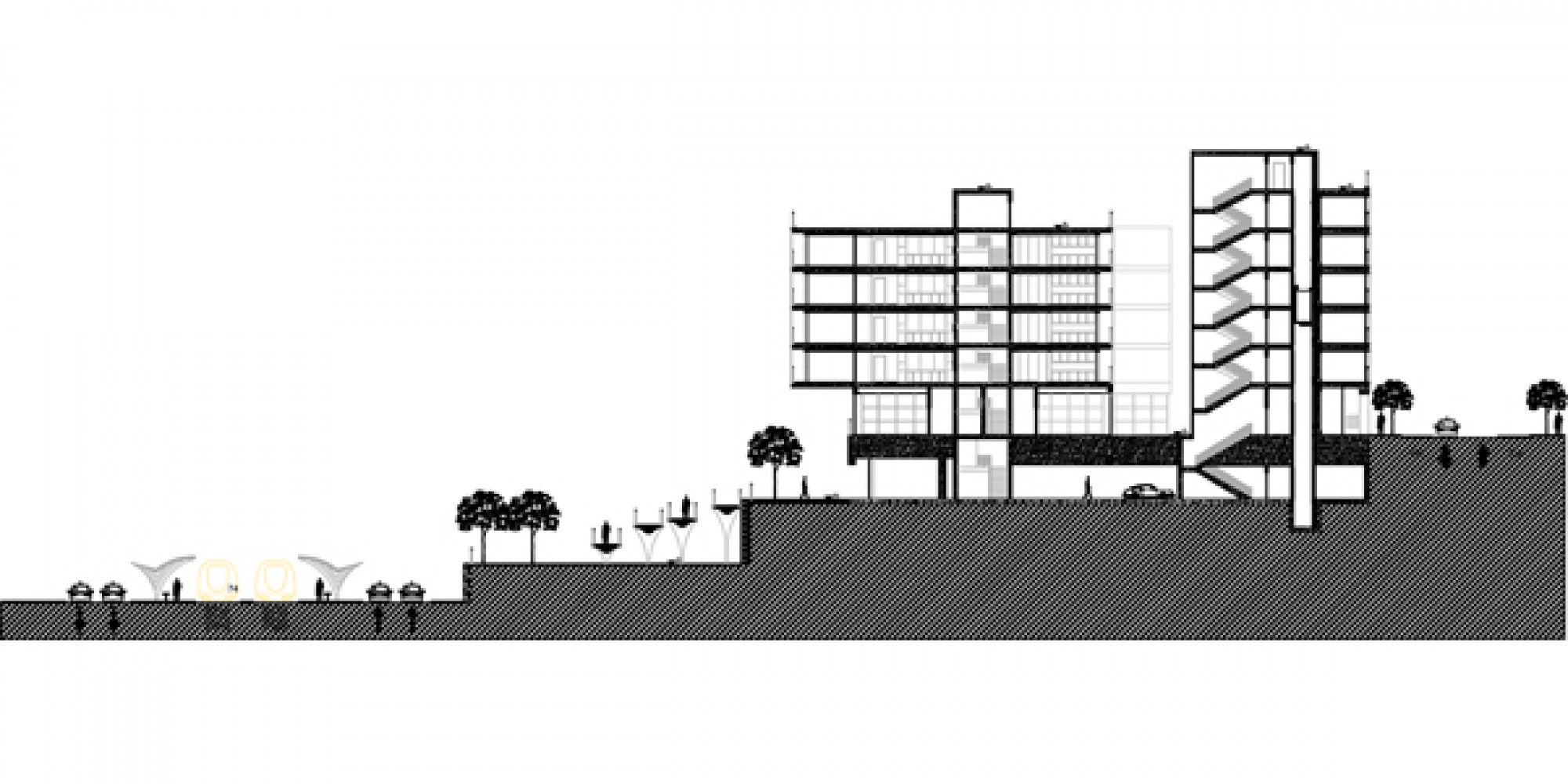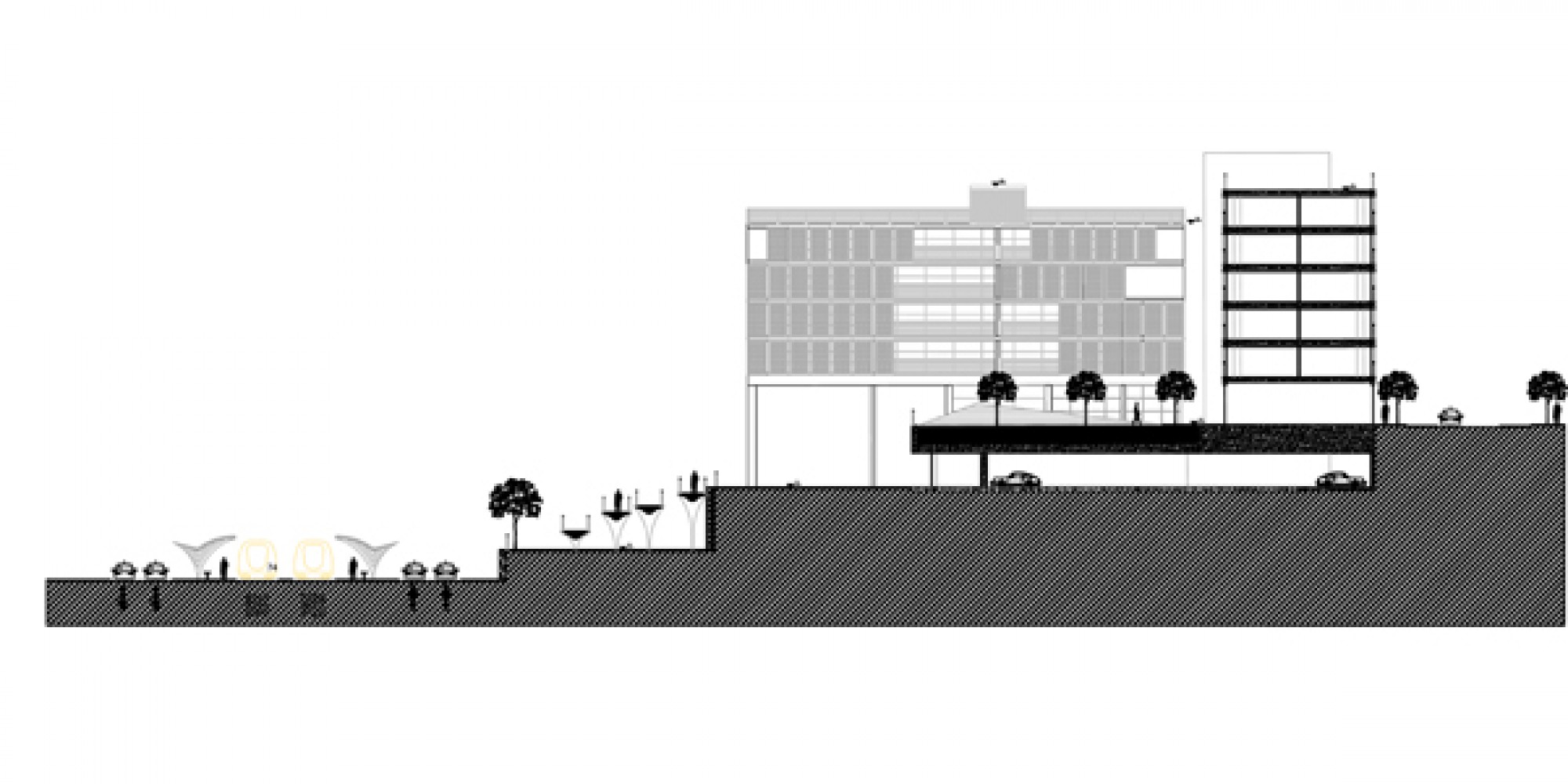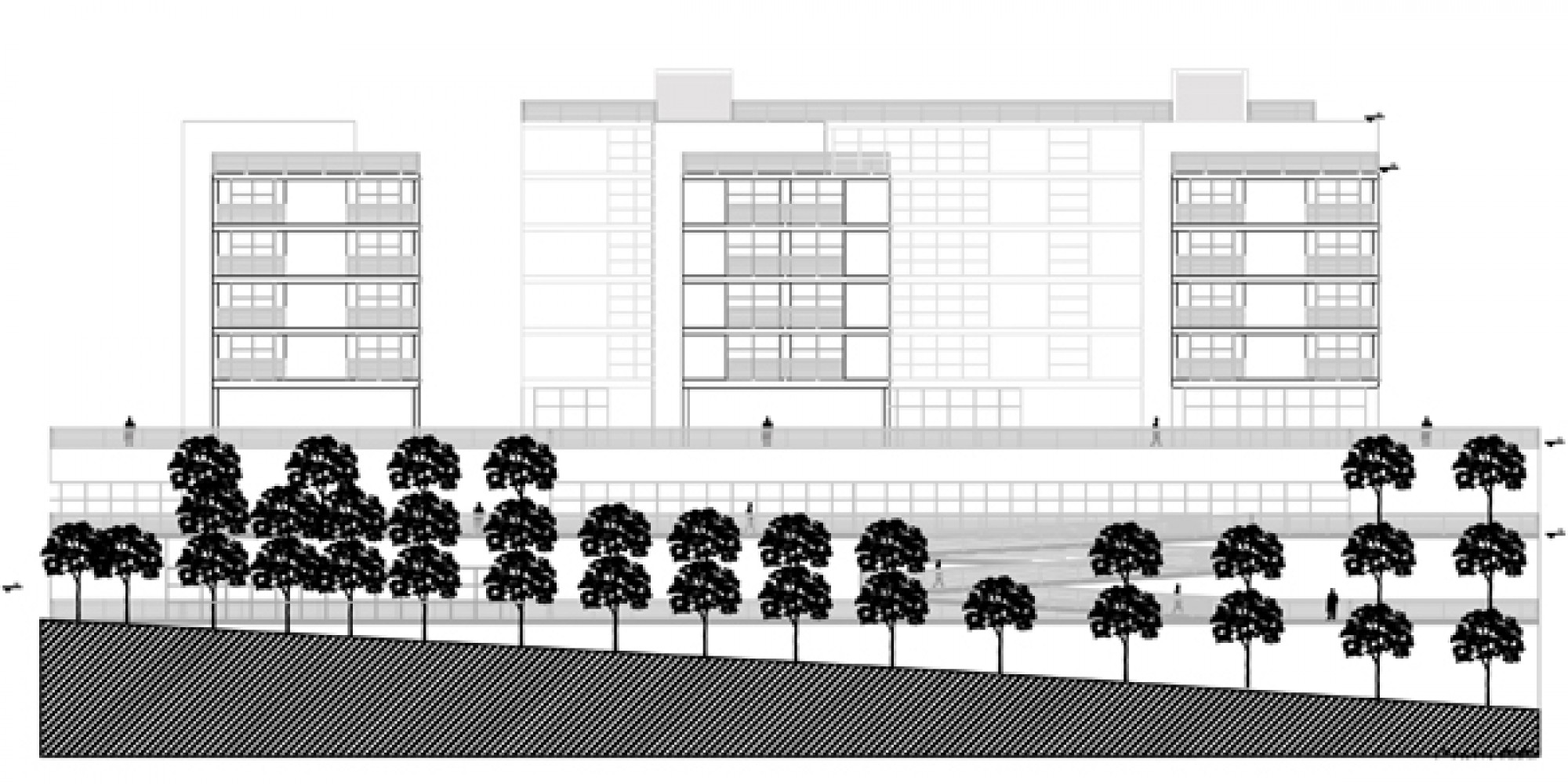Chelas Housing Prototype
Lisboa, Portugal
- CATEGORIA / CATEGORY: Habitação / Habitational, Planeamento Urbano/ Urban Planning
- TIPO / TYPE: Nova Construção / New Build
- LOCALIZAÇÃO / LOCATION: Lisboa, Portugal
- DATA DE CONCLUSÃO / COMPLETION DATE: 2006
- COLABORAÇÃO COM / COLABORATION WITH:
Este projeto começa com um plano urbano para toda essa área que tenta reunir comunidades previamente segregadas por rodovias. O objetivo é mudar a avenida principal, criando pontos comuns ao longo de suas fronteiras através da construção de novas casas e lojas que ligam os dois lados. A intenção é também dar esta "terra" de volta aos seus habitantes, através da implantação de árvores de fruto e áreas para cultivar seus próprios vegetais, criando algum tipo de fazendas urbanas. Os edifícios desenvolvidos aqui são destinados para uso misto (habitação e comercial), edifícios híbridos, parte da estratégia para trazer e manter as pessoas aqui; Eles também ajudam a superar a topografia difícil, permitindo pontes. Os edifícios são quatro ou cinco andares de altura e contêm apartamentos que variam de um único quarto para três quartos; Estes apartamentos foram projetados com o número mínimo de paredes possíveis. Em vez disso, os painéis dividem salas em tamanhos diferentes, a fim de melhor atender o habitante. Foram tomadas várias medidas de sustentabilidade, desde a concepção até à escolha de materiais e tecnologias de poupança de energia. A intenção final é que estes edifícios possam oferecer soluções sustentáveis no sector da energia.
This project starts with an urban plan for this entire area which attempts to reunite communities previously segregated by highways. The purpose is to change the main avenue, creating common points along its borders through the construction of new houses and shops that connect the two sides. The intention is also to give this land back to its inhabitants, through the implantation of fruit trees and areas to cultivate their own vegetables, creating some kind of urban farms. The buildings developed here are intended for mixed-use (housing and commercial), hybrid buildings, part of the strategy to bring and maintain people here; they also help to overcome the difficult topography by allowing bridges. Buildings are four or five stories high and contain apartments that range from a single bedroom to three bedrooms; these apartments were designed with the minimum number of walls possible. Instead, panels divide rooms into different sizes in order to better fit the inhabitant. A number of sustainability measures were taken, from the design to the choice of materials and energy saving technologies. The final intention being that these buildings can offer sustainable solutions in the energy sector.
